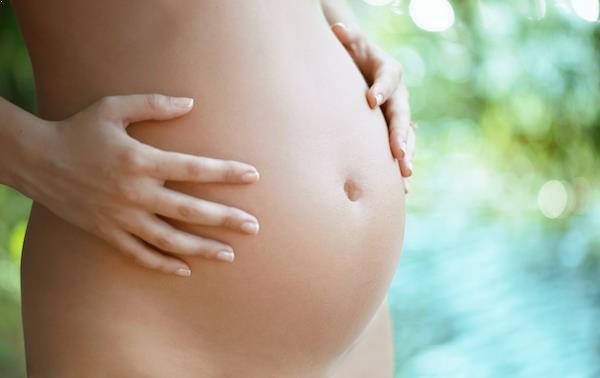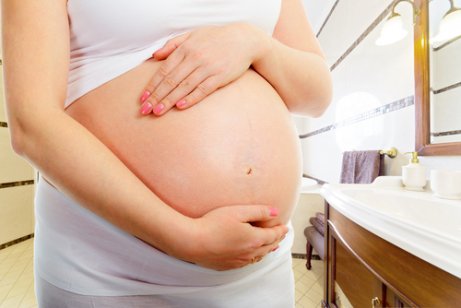Can The Shape of a Woman's Belly Indicate Her Baby's Sex?

If you’ve never heard this before, it might seem like a thing of the past. But it definitely isn’t. Many pregnant women and mothers affirm to this day that the shape of your gestating belly can predict whether you’ll give birth to a boy or a girl.
In fact, they claim that you can even predict how far along women are just by observing the size of their bellies. These types of affirmations are nothing more than urban legends.
There is no scientific evidence to show that these predictions are true. To date, the only way to determine a baby’s sex before birth is with an ultrasound.
But these aren’t the only myths that exist about pregnant women’s bellies. Another one has to do with the line that forms from their belly button towards their pubis. According to this myth, if the line extends up to the belly button, you’re carrying a girl. If the line reaches past the belly button, you’ll give birth to a boy.
The truth is that the hormonal changes that women experience during pregnancy produce changes in skin color. This is the reason behind the appearance of this line. The line has always been there, but pregnancy can suddenly make it more noticeable.
What factors determine the shape of a woman’s belly during pregnancy?
There are several factors that influence the shape of a woman’s belly during pregnancy. These factors can act independently or together. Below we’ll mention some of these factors and tell you more about them:
The size of the fetus
Obviously, the size of your baby is one of the determining factors when it comes to the size of your belly – but it’s not the only one. A smaller belly doesn’t necessarily mean that your baby is small. In the same way, a large belly doesn’t mean you’re going to give birth to a big baby.

The fetus’s position within the pregnant woman’s belly
If your baby’s back is parallel to his or her mother’s back, the mother’s belly may appear flatter. At the same time, if the baby turns around, the mother’s belly will become more prominent and pointy.
Some subscribers of these myths strongly affirm that if a mother’s belly is pointy, she’ll be the proud mother of a boy. However, if her belly is more round and evenly distributed – according to the same myth – she’s expecting a girl.
While babies develop in their mothers’ womb, they change from one position to the next. As a result, the shape of pregnant women’s bellies changes constantly and, therefore, is no indication of a baby’s sex.
Prior pregnancies
If you’ve already had children before, then your uterine muscle is longer thanks to your prior pregnancies. This means that your belly will appear wider than in your first pregnancy.
It’s important to remember that every woman’s body is unique. Therefore, the way each woman’s body behaves during pregnancy will vary from one case to the next. In fact, the same woman may have different experiences from one pregnancy to the next.
“To date, the only way to determine a baby’s sex before birth is with an ultrasound.”
Location of the placenta and the amount of amniotic liquid
If a woman has a large quantity of amniotic liquid, then her belly will appear much larger. The shape and size of her belly will also depend on where the placenta is located.
The mother’s unique physical characteristics
Some women have very defined physical traits that can determine the shape of her belly. One of these includes the presence of scoliosis. When a pregnant woman has a deviated spine, this may cause her belly to appear more prominent.

A woman’s frame is also a determining factor. Very thin women will appear to have enormous bellies because of how they contrast with their figures. However, larger frames tend to conceal the belly more, making it appear smaller in comparison to the mother’s figure.
It’s clear that there are many factors that influence the shape and size of women’s bellies while they’re expecting.
There are women who worry because the physical characteristics of their pregnancy don’t seem “normal.” Some women think this is because they have a friend who is just about as far along, but whose belly appears different. Or perhaps they have a friend whose pregnancy is less advanced, but her belly is larger.
“Feeling fat lasts nine months, but the joy of becoming a mother lasts forever”
—Nikki Dalton—
When it comes down to it, the appearance of your belly doesn’t really matter. What matters most is that you’re healthy and that your baby has a perfect place to develop for 9 months. No body is exactly like another, so don’t expect your pregnancy to look just like someone else’s.
There may be similarities, but the changes that a body experiences during pregnancy will still vary from one woman to the next.
This text is provided for informational purposes only and does not replace consultation with a professional. If in doubt, consult your specialist.








